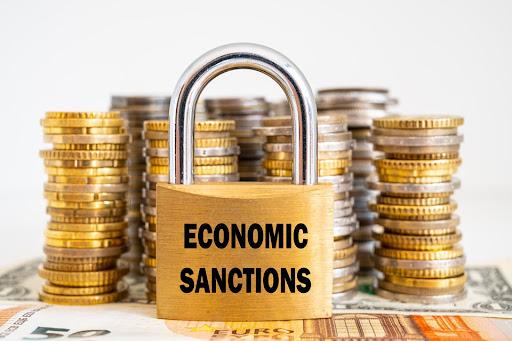Economic sanctions, once a niche tool of coercive diplomacy, have moved to the center of statecraft, recasting alliances, supply chains and financial networks. In the wake of Russia’s invasion of Ukraine and amid intensifying U.S.-China technology controls, governments are deploying trade bans, asset freezes and export restrictions at a scale that is forcing third countries, corporations and banks to recalibrate exposure and pick sides.
The ripple effects are reshaping the global order: energy flows are rerouted, parallel payment systems gain ground, and “secondary” sanctions extend Washington and Brussels’ reach far beyond their borders. Critics warn of unintended humanitarian costs and the fragmentation of the trading system; proponents say sanctions offer leverage short of war. This article examines how the expanding sanctions architecture is redrawing international relations-and what it means for enforcement, evasion and the balance of power.
Table of Contents
- Sanctions reshape energy flows and supply chains as exporters reprice risk and build parallel routes
- Secondary sanctions fragment global finance fueling a shift away from the dollar and new clearing systems beyond SWIFT
- What governments and firms should do now safeguard humanitarian trade diversify settlement channels and strengthen sanctions compliance
- The Conclusion
Sanctions reshape energy flows and supply chains as exporters reprice risk and build parallel routes
Energy trade is undergoing a rapid, opaque reconfiguration as embargoed producers pivot to receptive markets, extend voyage distances, and assemble workarounds across shipping, insurance, and finance; freight and credit costs now embed a visible “sanctions risk” premium, discounts widen on constrained exports, and compliance burdens swell for intermediaries, while importers purchase flexibility at higher basis prices and exporters invest in new logistics to reduce exposure to Western services, bifurcating supply chains into compliant and quasi-compliant channels and fragmenting price discovery across regional benchmarks.
- Repricing: elevated premiums on freight, reinsurance, and letters of credit; long-term deals add snapback and force majeure clauses tied to policy shifts.
- Rerouting: longer-haul crude and LNG voyages lift ton-mile demand; transshipment hubs and ship-to-ship transfers complicate origin tracing.
- Parallel networks: alternative insurers, flag registries, and logistics intermediaries in non-sanctioning jurisdictions reduce reliance on traditional providers.
- Currency and clearing: greater use of yuan, rupees, and dirhams, alongside swaps and barter, to bypass restricted payment rails.
- Infrastructure shifts: pipeline reversals, expanded storage, and rail corridors reoriented toward Asia and the Middle East.
- Oversight and risk: tighter monitoring of AIS gaps and beneficial ownership as secondary sanctions risks cool bank and trader participation.
Secondary sanctions fragment global finance fueling a shift away from the dollar and new clearing systems beyond SWIFT
US and EU “secondary” measures-penalizing third-country banks and firms that touch restricted entities-are restructuring payment routes and risk models, prompting cautious over-compliance and accelerating the search for non-dollar settlement and alternative messaging beyond SWIFT; the result is thinner liquidity in traditional corridors, higher due‑diligence costs for trade finance, and a fast-growing patchwork of regional and bilateral rails as treasurers, central banks, and commodity traders hedge exposure to extraterritorial enforcement.
- New rails: expansion of regional clearing and direct bank-to-bank messaging links to reduce reliance on legacy networks.
- Reserve diversification: central banks tilt toward a broader mix of currencies and gold to mitigate sanctions risk.
- Local-currency settlement: more trade invoiced in domestic units, backed by bilateral swap lines and netting arrangements.
- CBDC corridors: cross-border pilots and tokenized deposit projects trial instantaneous, sanction-resilient settlement.
- Compliance bifurcation: institutions ring‑fence businesses and counterparties, splitting books to manage exposure to multiple legal regimes.
What governments and firms should do now safeguard humanitarian trade diversify settlement channels and strengthen sanctions compliance
Amid widening penalties and volatile enforcement, officials and corporate risk chiefs are moving from case-by-case fixes to structural safeguards that keep relief moving, spread payment exposure, and evidence rigorous due diligence to regulators and investors.
- Ring-fence essential flows – standardized HS-code whitelists for food and medicine, machine-readable general licenses, pre-cleared counterparties, escrowed payments, and neutral audit trails to prevent diversion.
- Diversify settlement rails – multi-rail routing (SWIFT gpi, regional RTGS, CIPS/SPFS gateways), multi-currency invoicing, onshore netting hubs, diversified correspondent networks, and central-bank swap lines dedicated to relief transactions.
- Embed compliance by design – real-time screening with human oversight, ultimate beneficial owner resolution to natural-person level, geofenced controls, dual-use risk scoring, and contract “kill-switch” clauses tied to sanctions triggers.
- Increase traceability – ISO 20022 messaging, unique transaction IDs linking finance and logistics, electronic trade documents (eBL/eCO), and tamper-evident records to substantiate humanitarian exemptions.
- Tighten governance – board-level sanctions committees, supplier re-verification, red-team testing, tabletop exercises, and protected reporting channels for frontline compliance staff.
- Coordinate in public-private lanes – safe-harbor information sharing, joint advisories, rapid license clarifications, and dedicated ombuds services for NGOs and banks handling relief cargoes.
- Support smaller actors – subsidized screening tools, template clauses, export-credit guarantees for lawful consignments, and de-risking facilities to curb blanket de-banking.
- Plan for shocks – secondary-sanctions heat maps, country exit playbooks, alternative ports and corridors, and medical and food stock buffers tied to risk thresholds.
- Report outcomes – KPIs on license utilization, false-positive rates, on-time humanitarian deliveries, and remediation cycle times to build regulatory and market trust.
The Conclusion
As sanctions proliferate and deepen, they are reshaping not only the conduct of states but the circuitry of global commerce-redirecting trade flows, splintering payment systems, and testing the reach of national jurisdictions beyond their borders. Governments, firms and financial intermediaries are recalibrating in real time, weighing legal exposure against strategic priorities, while populations on all sides feel the economic and humanitarian crosscurrents.
The next phase will hinge on enforcement and evasion: how rigorously measures are applied, how effectively they’re circumvented, and whether secondary penalties widen the divide. With multilateral forums strained and alternative economic blocs hardening, the contest over the rules of globalization is set to intensify. For markets and policymakers alike, the question is no longer whether sanctions shape international relations, but how far-and for how long-they will define them.


